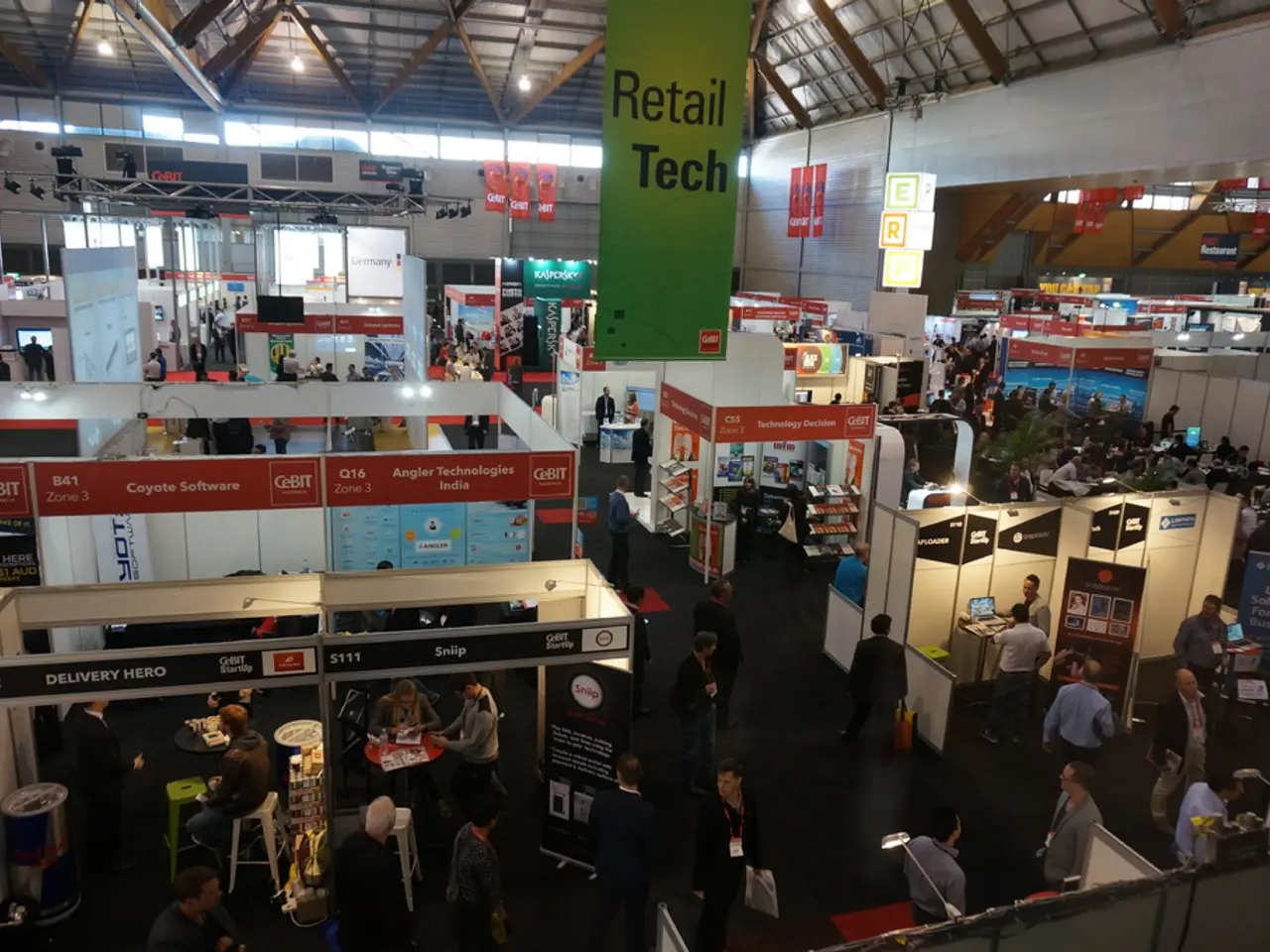Exploring Augmented Reality Exhibitions: In-Depth Look at the Industry
In the world of museums and galleries, technology is playing an increasingly significant role in enhancing visitor experiences. One such technology is Augmented Reality (AR), which is revolutionizing the way we interact with art, history, and science.
AR technology can bring exhibits to life, making them more interactive, accessible, and educational. It allows visitors to engage with exhibits in a more personalized way, providing an immersive environment that transcends the physical boundaries of the museum.
The Neon Museum in Las Vegas, for instance, offers an immersive AR lightshow called "Brilliant! Jackpot." Using projection mapping, 3D photogrammetry, and structured light scanning, the museum reanimates 40 vintage neon signs, creating a 360-degree audiovisual experience for visitors.
The Manitoba Museum in Canada features an AR experience called "Critical Distance" in its Science Gallery. This exhibit allows up to eight visitors to interact with the exhibit simultaneously, enhancing engagement with the content through augmented reality.
The Dino Dana Adventures exhibit, on the other hand, uses AR to allow visitors to explore a Dinosaur Boneyard and participate in a Fossil Hunt, providing a hands-on prehistoric science experience.
Collaborative projects with tech giants like Google in Paris have also been instrumental in leveraging AR technology to narrate the evolution of historic landmarks and objects without physical interference. This not only enhances preservation and storytelling but also exemplifies AR/VR's potential to tailor museum experiences.
However, implementing AR technology in museums can be costly, which can limit the number of institutions able to offer these experiences. Moreover, AR technology can be prone to technical issues such as glitches and errors, which can be frustrating for visitors.
To create an AR exhibition, a systematic process is followed. This includes defining the concept, identifying the audience, selecting the content, creating the digital assets, choosing the AR platform, developing the AR application, integrating with the physical space, testing the experience, training the staff, marketing the exhibition, launching the exhibition, collecting visitor feedback, analyzing and iterating, and maintaining the technology.
The development process requires collaboration between artists and technologists to create engaging and interactive content that caters to the unique needs of the museum and its visitors. AR exhibitions can also be tailored to suit different audiences, including children and adults with disabilities.
In recent years, AR technology has gained popularity, especially during the pandemic, as it allows visitors to experience museums from the comfort of their homes. Examples of AR include Pokemon Go, Snapchat filters, and IKEA's Place app.
Several museums offer innovative AR tours, such as the Smithsonian American Art Museum, the British Museum, and the Louvre. These institutions use AR to showcase their collections in new and innovative ways, attracting a wider audience.
AR technology offers enhanced engagement, improved learning, increased accessibility, and a more memorable visitor experience. It also allows for flexibility in exhibition design, as exhibits can be easily updated and changed without the need for physical modifications.
In conclusion, AR technology is transforming the museum experience, making it more interactive, accessible, and engaging. While it presents challenges, the benefits it offers in terms of enhancing learning, accessibility, and visitor experience make it a valuable tool for museums and galleries.
[1] The Neon Museum: https://www.neonmuseum.org/brilliant-jackpot/ [2] Google Cultural Institute: https://artsandculture.google.com/ [3] Manitoba Museum: https://www.manitobamuseum.ca/ [4] Dino Dana Adventures: https://www.dinodana.com/ [5] Smithsonian American Art Museum: https://americanart.si.edu/ [6] British Museum: https://www.britishmuseum.co.uk/ [7] Louvre: https://www.louvre.fr/en/visites-et-expositions/augmented-reality-the-louvre-museum [8] AR technology: https://www.techopedia.com/definition/34934/augmented-reality-ar [9] Pokemon Go: https://www.pokemongolive.com/ [10] Snapchat filters: https://www.snapchat.com/ [11] IKEA's Place app: https://www.ikea.com/us/en/applications/place/
Artificial-intelligence can be utilized in the development process of AR exhibitions to enhance interactivity and personalization, catering to the unique needs of museum visitors. By leveraging AI, the AR applications can adapt and evolve based on visitor behavior and preferences, ultimately creating a more immersive and tailored museum experience.
As gadgets advance, museums can incorporate new AR devices, such as smart glasses or earbuds, to further streamline and improve the visitor's AR experience, seamlessly integrating technology into the museum's physical space without physical distractions.




